What Do Computer Gernerated Pieces of Art Look Like
The use of digital tools and aids in lodge to create art has not been an uncommon thing for quite a while at present, in fact, it almost comes naturally present. But, when we speak about reckoner art, or computer generated art, the automobile becomes the main usher of the artistic forcefulness. The term estimator art unremarkably refers to any form of digital imagery or graphic art that is produced with the assistance of a computer , or any other form where the employment of a figurer is emphasized. Today, many traditional disciplines are often combined with digital technologies, thus blurring the lines between traditional works of art and new media works. As it is always-evolving and changing, the digital world and technology based art tools keep producing new ways of creating, editing and forming the artistic vision of an individual who must keep in touch with the latest updates in order to apply the maximum potential of machines. Dating back to mid/late 1950s, the first estimator art shows, held at the Howard Wise Gallery in NY, astounded the public. At the time, the artwork was dubbed every bit Digital or Cybernetic art, information technology comprised generally of geometrical shapes in dissimilar random combinations. The grade was ground-breaking at the time of its conception, and henceforth connected to develop and grow alongside of the digital evolution which was destined to spread globally.
Now, with the omnipresent influence of digitalization, nosotros accept a await at 10 beautiful examples of calculator generated art.
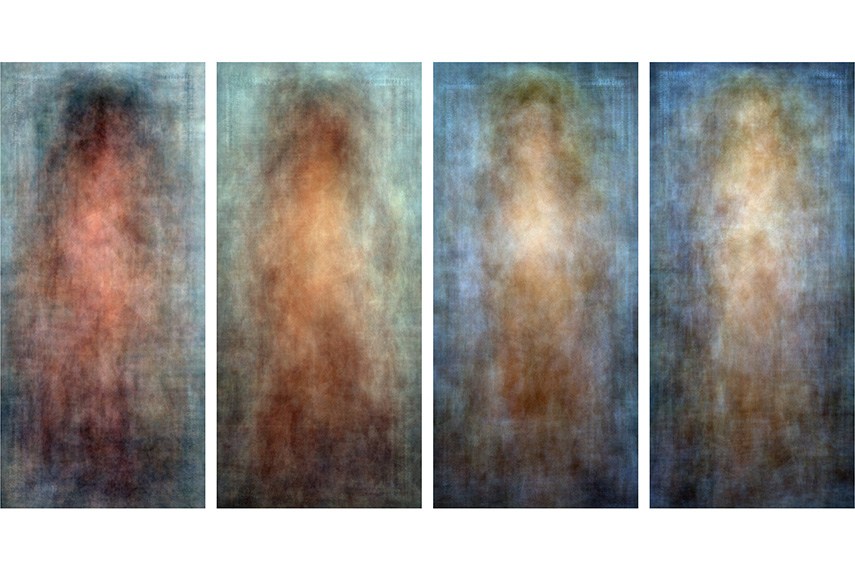
Jason Salavon – Every Playboy Centerfold, The Decades
Earlier fully stepping into the practice of being a fine artist, Jason Salavon worked as a developer in the video game industry. Widely recognized for his manipulation of the vast quantity of iconographic materials through the use of computer software, Salavon presents a fresh perspective on the familiar. His do often unearths unforeseeable patterns that resonate through the human relationship of the part and the whole. Such is the result of his series of calculator generated fine art pieces where he created his signature blurred photographic issue by overlaying and combining numerous photographs of not-so-average women from the Playboy centerfold foldouts from the four decades; 1960 to 1999. Have a await at the story behind the iconic Marilyn Monroe photographs for the first outcome of Playboy. The final production displayed predominant characteristics of a typical Playboy model: calorie-free peel, long hair, sparse body, radiant confronting a blueish background. What was interesting is that the pictures in the serial actually reveal the gradual thinning, lightening and increased frontality of the models throughout the years.

Scott Snibbe - Falling Girl
An immersive interactive narrative installation, named Falling Girl, allows the viewer to get an active role of the story which follows a immature girl's unnaturally ho-hum descent from the top of a skyscraper to the basis. The falling girl reacts to the people and events from each window she passes by on her fashion downward, and the audiences were given the risk to play the part of those people. The message of this technology based art piece is conveyed through an interactive way, emphasizing the shortness of our lives and the (un)importance of the minor, footling things. The digital installation provided a unique feel for the visitors, giving them the opportunity to get an integral part of the art.
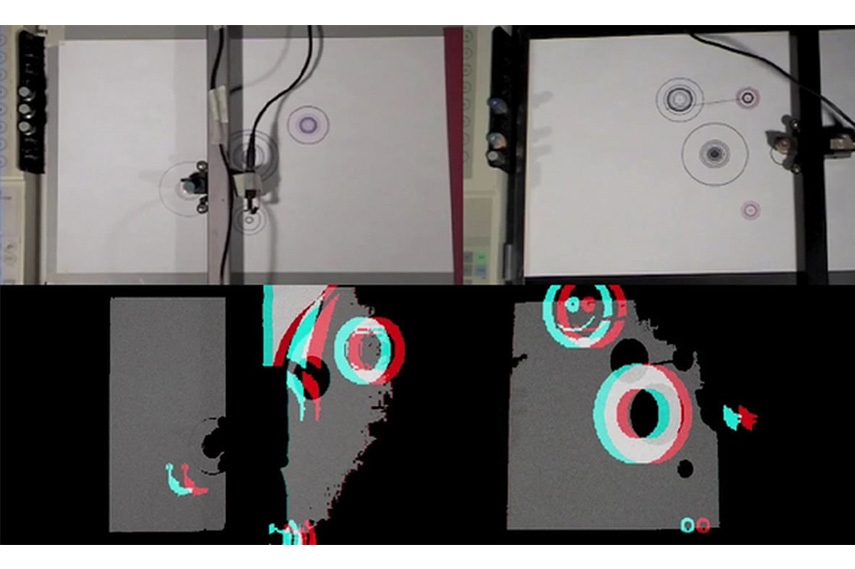
Victor Adan, Jeff Snyder & Daniel Iglesia – The Draftmasters
Hacked pen-plotter printers equipped with pickups for audio, producing…fine art? Is this example taking computer art to the extreme? Perhaps, only it is at the core of its bones principles. The way information technology works is that two guys, namely Victor Adan and Jeff Snyder, make concrete gestures and motions which direct the hacked pen-plotter printers. The same printers are pimped with pickups to make the sound, Daniel Iglesia, the third guy from this video/geek/music collaboration, analyzes the visuals and creates 3D graphics in real-time. Doesn't make much sense? Well, have a wait at the fine art piece and the artists in activeness, perhaps it will requite you some perspective, or not… Either mode, it is definitely computer fine art!
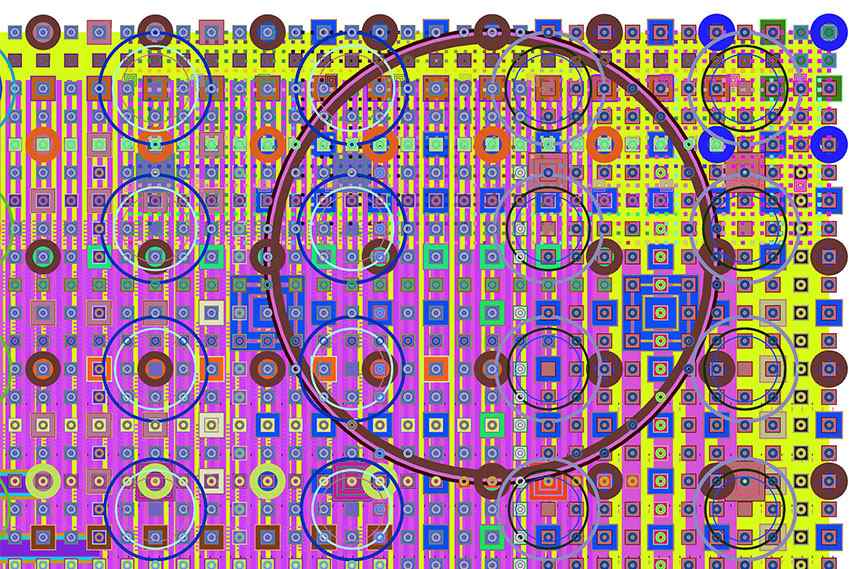
Mark Wilson - 'e4708'
In 1980, Mark Wilson bought himself a microcomputer and started learning programming in guild to create artwork. His estimator generated art pieces have been widely exhibited across the world. The distinct technological flavor to his geometric imagery has made him one of the nearly prominent names behind reckoner art. Back in the 80s, in that location were simply a few options for an artistic endeavor involving a machine. Wilson purchased a personal computer and learned to write his ain software. Through calculated repetition, Mark creates complex layers that event in very intricate artworks. Every bit in most examples of computer art, some aspects are left to run a risk and are chosen randomly by the machine, while others are carefully designed past the artist.
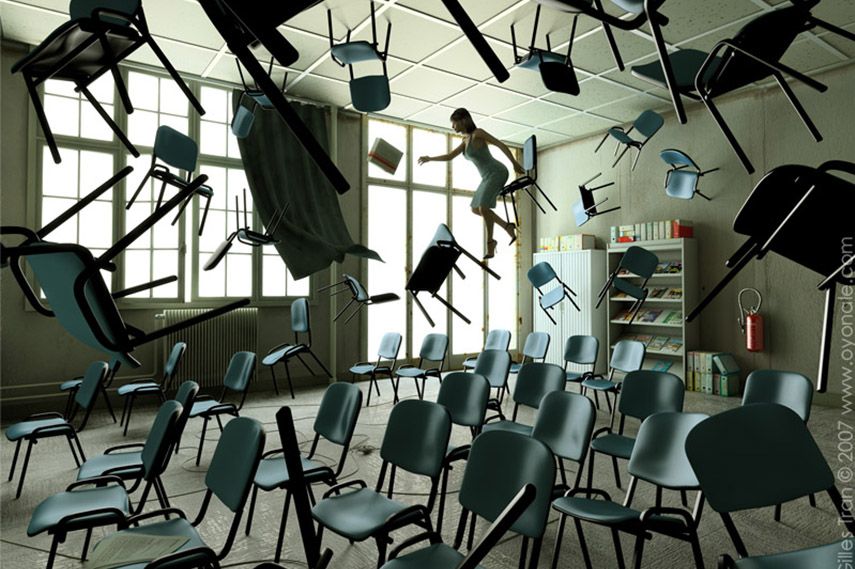
Gilles Tran – Blowing in the wind
French contemporary 3D artist Gilles Tran, mostly known as Oyonale, is dedicated to digital art. His work focuses on 3D rendering software, such as POV-Ray, Cinema 4D, Poser and FinalRender. The website of his portfolio is arable with digital artwork from over the years of his career. The prolific programmer and designer has created surreal worlds with his digital prowess. His 3-dimensional spaces are breathtaking and lure the viewer in, making the art slice nigh life-similar. His website bursts with various examples of digital fine art and also provides free images of the work in progress and shows the steps he made in order to finalize the finished production. Such is his piece entitled Blowing in the wind, where the gravity seems to be toying with the subjects inside the room. The whole scene seems to be capturing a beautiful, yet dangerous moment in the wind.
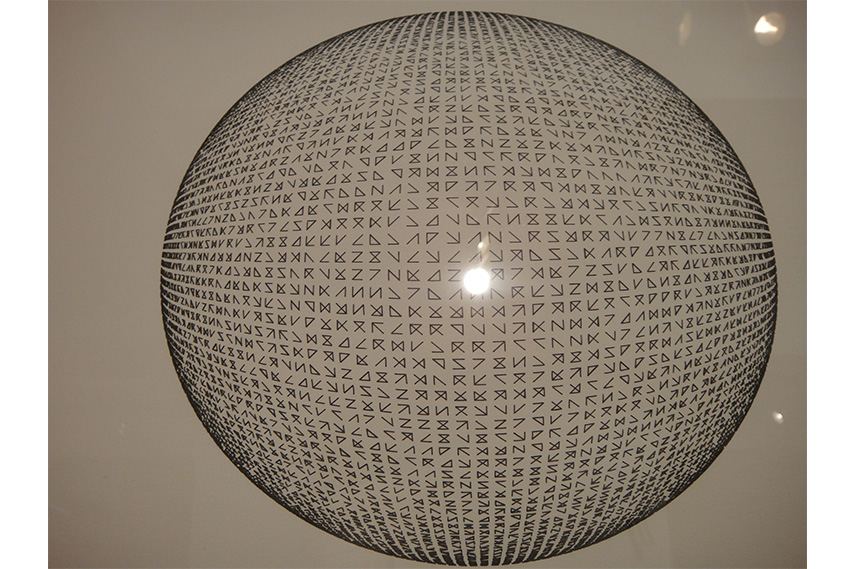
Manfred Mohr - Sphereless
The high interest in algorithmic art urged Manfred Mohr to start using the computer in 1969. Considered as a pioneer of digital art, his early estimator art pieces are algorithmic and feature a strong attitude towards rhythm and repetition. Since then, Mohr has had many solo exhibitions worldwide and he has participated in innumerable group shows, such every bit: MoMA - Museum of Modernistic Fine art, NY 1980, Center Pompidou, Paris 1978, 1992; ZKM (Center for Art and Media), Karlsruhe 2005, 2008, 2010; Museum Ritter, Waldenbuch 2005, 2006, 2008, 2013; MoCA, Los Angeles 1975; National Museum of Modern Fine art, Tokyo 1984; Museum of Modern Art, San Francisco 1973, 1977, 1980, and many, many others. He is also the recipient of numerous highly acclaimed awards similar ACM SIGGRAPH Distinguished Artist Award for Lifetime Achievement in Digital Fine art, 2013 and Gold Nica from Ars Electronica, Linz 1990, just to name a few.
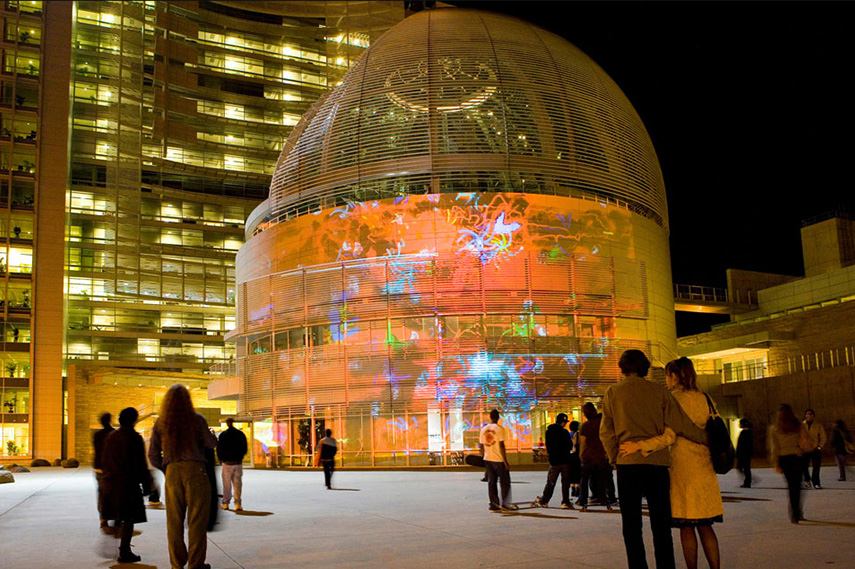
Camille Utterback – Affluence
Located in the city of San Jose, California, Abundance was a temporary public installation past Camille Utterback. In club for this engineering science based art piece to piece of work, a video camera was installed on the Metropolis Hall which captured the movements of people in the plaza below. The captured silhouettes were then projected as a dynamic blitheness onto the cylindrical edifice. Movements and paths of the passersby became part of a collective visual record, thus turning the building into an ever-changing and dynamic canvas.
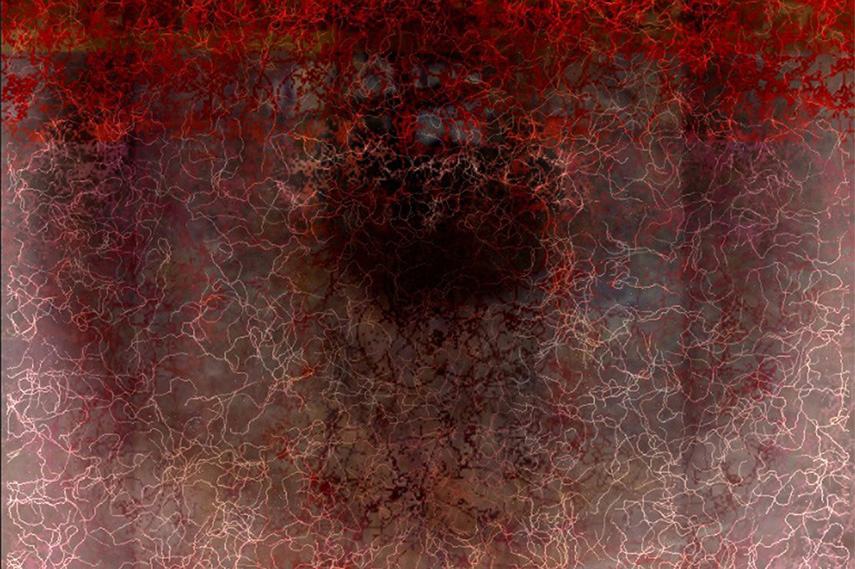
Joseph Nechvatal – Computer Virus
The post-conceptual digital artist and art theoretician, Joseph Nechvatal, creates figurer-assisted paintings, animations and custom-designed reckoner viruses. Ever since his early pieces from 1986, Nechvatal has been fascinated with the relationship between reality and virtuality. Coincidentally, he coined the art theory term viractualism. One of his most famous works was the Estimator Virus Project where he aimed to create physical paintings through algorithms that were to implement the "viral" processes. He was attempting to bring back the virtual into the real. The unabridged series is described by Nechvatal as a part of the viractualism movement which seeks to form and investigate interfaces between the technological and the biological.

Pascal Dombis - Irrational Geometrics
Through the utilize of excessive technological procedure, Pascal Dombis explores the complexities of visual paradoxes. Computers and algorithmic elements are the key factors in his fine art. Equally many other digital artists, through intricate repetitions of simple processes, he produces elaborate geometric and typographical signs. The final piece sometimes appears as a sort of a glitch we would encounter in a computer program, but it is that feeling of unease and de-structure that inspires the viewer to gaze deeper and think virtually the paradox of mechanical control and the chaotic randomness it produces.

POV-Ray – Nevertheless Life
So, how far exactly has calculator fine art progressed through the ages? Well, a little plan called Persistence of Vision Raytracer, aka POV-Ray, may provide the respond. This tracing software generates images from a text-based scene description, creating visual works of fine art from millions and billions of circuitous mathematical calculations. It does not crave any in-born talents similar drawing or painting skills, and it is costless to employ. The finish result speaks for itself, the high resemblance to a photograph or a real life-like image is uncanny. It remains to be one of the almost commonly used ray-tracing software to date, information technology is relatively easy to use, and it provides powerful features.
All images used for illustrative purposes but
Source: https://www.widewalls.ch/magazine/computer-generated-art-10-artworks
0 Response to "What Do Computer Gernerated Pieces of Art Look Like"
Post a Comment